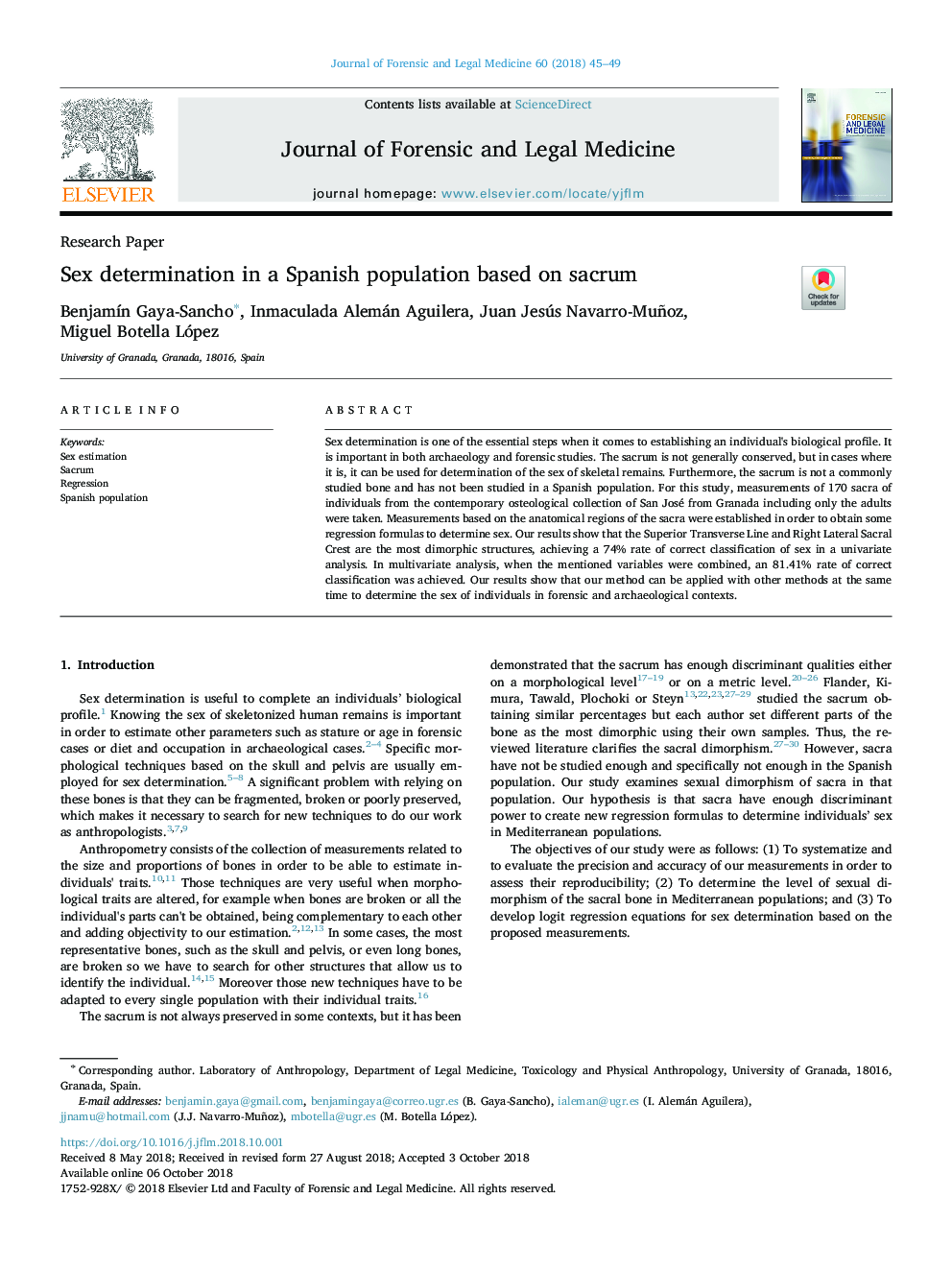| Article ID | Journal | Published Year | Pages | File Type |
|---|---|---|---|---|
| 11032554 | Journal of Forensic and Legal Medicine | 2018 | 5 Pages |
Abstract
Sex determination is one of the essential steps when it comes to establishing an individual's biological profile. It is important in both archaeology and forensic studies. The sacrum is not generally conserved, but in cases where it is, it can be used for determination of the sex of skeletal remains. Furthermore, the sacrum is not a commonly studied bone and has not been studied in a Spanish population. For this study, measurements of 170 sacra of individuals from the contemporary osteological collection of San José from Granada including only the adults were taken. Measurements based on the anatomical regions of the sacra were established in order to obtain some regression formulas to determine sex. Our results show that the Superior Transverse Line and Right Lateral Sacral Crest are the most dimorphic structures, achieving a 74% rate of correct classification of sex in a univariate analysis. In multivariate analysis, when the mentioned variables were combined, an 81.41% rate of correct classification was achieved. Our results show that our method can be applied with other methods at the same time to determine the sex of individuals in forensic and archaeological contexts.
Related Topics
Life Sciences
Biochemistry, Genetics and Molecular Biology
Genetics
Authors
BenjamÃn Gaya-Sancho, Inmaculada Alemán Aguilera, Juan Jesús Navarro-Muñoz, Miguel Botella López,
